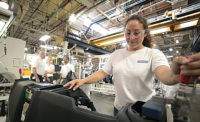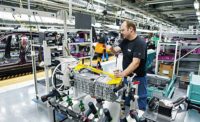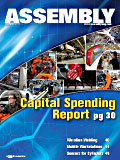
If only every U.S. manufacturer were like General Electric Co. During the past year, GE has gone on a veritable binge of capital spending.
In April, GE invested $2 million in its electronics assembly plant in Rochester, NY, which makes printed circuit boards for communications, monitoring and metering systems. Six months later, in October, the company announced plans to spend $231 million to build a new assembly plant in Forth Worth, TX, to make electric drive systems for heavy-duty mining trucks and to expand an existing locomotive and mining equipment factory in Erie, PA.
That same month, GE announced that it would build a new solar panel assembly plant in Aurora, CO, creating 355 jobs and highlighting a $600 million investment in the company’s solar business. At capacity, the factory will produce enough panels per year to power 80,000 homes.
In some ways, GE’s 2011 capital spending binge might be a harbinger of things to come in 2012. If the results of our 16th annual capital equipment spending survey are any indication, the coming year should see continued investment by big companies assembling big things.
As for the rest of the manufacturing economy in the United States, the story might be a little different. Bothered by lingering concerns over future economic growth, many U.S. manufacturers appear to be taking a wait-and-see attitude toward capital investment. Our survey indicates manufacturers will likely spend slightly less on assembly technology next year than they did this year.
Specifically, U.S. assembly plants will spend $2.4 billion on new equipment in 2012. That’s slightly better than 2010 spending, but it’s a decrease of 17 percent from the $2.89 billion projected to be spent in 2011.
Some 35 percent of respondents will spend more on assembly technology next year than they did this year. That’s the same healthy percentage as last year’s survey. Indeed, the last time that percentage was above 35 percent was in 2000.
Conversely, 22 percent of respondents will spend less in 2012 than they did 2011. That’s a bit more than the 20 percent from last year’s survey, but historically, it’s still on the low side.
Even so, actual budget figures indicate that spending will be less than in 2011, but more than in 2010. For example, 15 percent of respondents will spend more than $500,000 on assembly technology in 2012. That’s less than the 18 percent from 2011, but it’s more than the 13 percent from 2010.
Some 27 percent of respondents will spend between $100,000 and $500,000 in the coming year. That compares with 22 percent in 2011 and 26 percent in 2010. At the same time, 58 percent of plants will spend less than $100,000 on new equipment in 2012, compared with 60 percent in 2011. In other words, the biggest spending companies will be cutting back a bit next year, but they won’t be turning off the tap entirely.
The average budget decreased 27 percent, from $657,451 in 2011 to $479,759 in 2012. However, the median budget for 2012 is the same as it was in 2011: $50,000.
It should be noted that the response rate to this year’s survey was lower than normal. Indeed, we received only 269 useable returns this year, for a response rate of 3 percent. As a result, some of our cross-tabulations are not statistically significant, and some of our projections might be skewed up or down.
For example, the average number of employees at responding plants this year is 161. In comparison, that figure was 260 in 2010 and 626 in 2009. Granted, U.S. manufacturers have shed thousands of jobs over the past three years, and they’re doing more with less. Even so, it’s likely that our results might be biased in favor of plants with smaller capital budgets.
Be that as it may, one reason assemblers might be spending less in 2012 is because they didn’t spend as much as they wanted to this year. For the third straight year-and the sixth time in the past eight surveys-less than half of our respondents spent at least 70 percent of their proposed capital budget for the year.
On average, assemblers spent 63 percent of their 2011 budgets. That’s a definite improvement over the record low of 59 percent set in 2009, but it’s still less than the average of 67 percent in 2008 or 79 percent in 2002.
Regardless of how much they spend on capital equipment next year, assemblers are demanding a quick return on investment (ROI). In 2010, half of all assembly plants had an ROI period of two years or more, while 28 percent expected payback in 13 to 24 months. Two years later, those percentages have reversed. Next year, only 29 percent of plants have an ROI period of at least two years, a record low, while 48 percent expect payback in 13 to 24 months, a record high.

Spending Motives
For the just the second time since we began our survey back in 1996, cost reduction is not the No. 1 reason for buying assembly equipment. Instead, assemblers cited replacement of old equipment as their top reason for investing in assembly technology next year. Almost half-46 percent-of U.S. assembly plants will be replacing worn-out machinery next year.Of course, cost reduction remains a high priority, and 45 percent of plants will be getting equipment next year to cut costs.
In a sign that the economy truly is recovering, 38 percent of plants will buy equipment next year to increase capacity and 37 percent are looking for equipment to assemble new products. Both percentages are the highest they’ve been since 2009.
Quality improvement was a mantra back in the late 1980s and early 1990s. The Malcolm Baldridge National Quality Award was established in 1987, while the Shingo Prize for Operational Excellence was created in 1988. Apparently, assemblers got the message.
In 1996, the first year of our survey, 31 percent of plants planned to buy equipment to boost product quality. Since then, however, that percentage has gradually decreased. Next year, just 12 percent of plants will install technology to improve quality. That compares with 18 percent in 2011 and 21 percent in 2010, and it’s an all-time low for our survey.
Other motives for buying equipment include:
- reduce cycle time or eliminate a bottleneck, 26 percent.
- implement lean manufacturing, 28 percent.
- increase safety, 18 percent.
With prices rising for metal and plastic, more and more assemblers are concerned over the cost of scrap and materials. Some 23 percent of assembly plants are looking to lower their material costs next year, up from 16 percent in 2011. Similarly, 37 percent of plants want to reduce the cost of scrap in 2012, up from 33 percent in 2011.
Assemblers appear to have got their warranty costs under control. Only 16 percent of plants need to lower their warranty costs next year, compared with 21 percent in 2010 and 24 percent in 2011.
Other costs being targeted by assemblers include:
- indirect labor and setup, 42 percent.
- work-in-process (WIP) inventory, 22 percent.
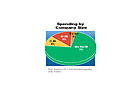
What Assemblers Want
With management taking a cautious approach to capital investment, engineers might be bargain-hunting next year.On average, manufacturers will meet 40 percent of their assembly system needs next year with equipment they make or build in-house. That ratio has remained steady over the years.
In contrast, manufacturers have gradually increased their purchasing of used and rebuilt assembly equipment. In 1998, manufacturers met an average of 20 percent of their assembly system needs with used equipment. That percentage has climbed steadily ever since. In 2003, the average was 28 percent. In 2008, it was 32 percent. Next year, manufacturers will meet, on average, 37 percent of their assembly system needs with used gear.
Given assemblers’ concerns over scrap and material costs, it is perhaps no surprise that factories will be increasing investments in test and inspection technology.
Forty-six percent of plants will purchase test equipment next year, compared with 42 percent in 2011. On average, assemblers will devote 7.7 percent of their 2012 capital budget to test equipment, up 2.4 percentage points from 2011. All totaled, assembly plants will spend $182 million on leak testers, functional testers, circuit board analyzers and other testing technology-an increase of 19 percent compared with 2011.
Some 47 percent of plants will buy inspection equipment next year. That compares with 42 percent in 2011, and it’s a record high for our survey. On average, assemblers will allocate 6.4 percent of their 2012 budget to inspection equipment, which is also a record high. All totaled, assemblers will spend $150.9 million on vision systems, sensors, microscopes and other technologies for inspecting parts and assemblies, 10 percent less than they spent in 2011.
Among all assembly technologies covered by our survey, the biggest gain will be in computers and software. Whether it’s due to the advent of cloud computing or new regulations in the medical device and defense industries, 56 percent of respondents-a record high-plan to buy computers and software next year. On average, assemblers will dedicate 10.2 percent of their 2012 budget to computers and software, more than twice the average in 2011. All totaled, assemblers will spend $155.9 million on information technology next year, 22 percent more than they spent in 2011.
Power tools will be the most coveted assembly technology in 2012, with 58 percent of plants expected to purchase handheld screwdrivers, nutrunners and riveters. In fact, power tools have been the most frequently purchased assembly technology for four out of the past five years.
The difference next year will be in how much assemblers spend on tools. On average, assemblers will dedicate 9.1 percent of their 2012 budget to electric and pneumatic tools-more than double the 2011 average. All totaled, assemblers will spend $134 million on tools next year, 5 percent more than in 2011.
With some assemblers unwilling to commit to big-ticket purchases, engineers are looking to make small improvements in their lines-like workstations. Forty-six percent of plants will buy workstations and ergonomic accessories next year, the highest percentage since 2007. Assemblers will devote, on average, 6.1 percent of their budget to workstations, 1.8 percentage points more than in 2011. In all, assemblers will spend $80 million on workstations next year, an 11 percent increase from 2011.
We added a new technology category to this year’s survey-tooling. Over the past few years, many respondents had written “tooling” in our catch-all “other” category, so we decided to see how common tooling actually is on engineers’ shopping lists. The answer surprised us.
Fifty-six percent of respondents said they’ll buy fixtures, pallets and other tooling next year, making that technology the second-most popular category along with computers and software. On average, assemblers will devote 10.6 percent of their budget to tooling in 2012. All totaled, they will spend $85 million on it next year.
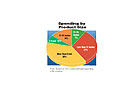
Size Matters
Data from our previous two spending surveys showed that smaller manufacturers bore the brunt of the economic downtown. Next year, however, we could see a boost in spending from small companies.Indeed, assembly plants with fewer than 100 employees will account for 14 percent of all factories with capital budgets of at least $1 million. That’s the highest percentage for that group since 2008. All totaled plants with fewer than 100 employees will spend $311.5 million on assembly technology next year, up 58 percent from 2011.
Of course, our largest plants produce the lion’s share of capital spending, and next year will be no exception. Plants with more than 200 employees represent about 20 percent of ASSEMBLY’s readership, but they will account for almost three-fourths of all spending on capital equipment next year. Plants in this category will spend, on average, more than $1.3 million on assembly technology next year-four times the average budget for midsized plants.
Forty-six percent of plants with more than 200 employees say they’ll spend more next year than they did this year. That compares with 27 percent for plants with fewer than 20 workers and 35 percent for all U.S. plants. Conversely, only 17 percent of plants with more than 200 employees say they’ll spend less next year, compared with 27 percent for plants with fewer than 20 workers and 22 percent for all U.S. plants.
Compared with smaller facilities, plants with more than 200 employees are more likely to be assembling new products (55 percent vs. 37 percent for all U.S. plants); increasing capacity (45 percent vs. 38 percent for all U.S. plants); and implementing lean manufacturing (38 percent vs. 28 percent for all U.S. plants). And, they’re less likely to be replacing old or worn out equipment (38 percent vs. 46 percent for all U.S. plants).
Interestingly, large plants are less likely to build their own assembly equipment or to purchase used or rebuilt equipment. On average, plants with more than 200 employees meet 34 percent of their assembly system needs with equipment built in-house. That compares with 48 percent for plants with fewer than 20 workers and 40 percent for all U.S. plants. Similarly, large plants purchase, on average, 76 percent of their assembly equipment new. That compares with 53 percent for plants with fewer than 20 workers and 63 percent for all U.S. plants.
Large plants are also more likely to have automated assembly systems. Compared with all U.S. factories, plants with more than 200 employees are twice as likely to use fixed automation to assemble products and 1.5 times more likely to use programmable automation.
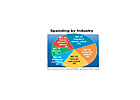
Transportation Equipment
For the fifth consecutive year, transportation equipment manufacturers (NAIC 336) will spend more on assembly technology than any other industry. Only 14 percent of plants in this industry will spend less next year than they did in 2011-the lowest such percentage of any industry and a record low for NAIC 336.All totaled manufacturers of cars, planes, motorcycles, trucks, boats and missiles will spend $599 million on assembly technology in 2012. Although that’s 33 percent less than the industry spent in 2011, it will still be $96 million more than any other industry in 2012.
Nineteen percent of transportation equipment manufacturers will spend at least $1 million on assembly technology next year. That compares with 12 percent in 2011, and it’s the biggest percentage for this industry in five years. An additional 24 percent of plants will spend between $250,000 and $1 million, compared with 22 percent in 2011. The mean 2012 budget for manufacturers in this industry is more than $1.1 million. That’s twice the national figure, and it’s the highest average for this industry since 2008.
This industry continues to introduce new products. Half the plants in NAIC 336 are buying equipment to assemble a new product. That compares with 41 percent in 2011 and 37 percent for all industries next year.
Compared with other industries, manufacturers in NAIC 336 are more likely to buy equipment to cut costs (54 percent vs. 45 percent for all plants), reduce cycle time (36 percent vs. 26 percent for all plants), get lean (54 percent vs. 28 percent for all plants), and increase safety (32 percent vs. 18 percent for all plants).
As for assembly technology, manufacturers of transportation equipment are more likely to buy dispensing equipment (32 percent vs. 21 percent for all plants), multistation automated assembly systems (36 percent vs. 21 percent for all plants), assembly presses (41 percent vs. 27 percent for all plants), automatic screwdriving machines (36 percent vs. 24 percent for all plants), and conveyors (38 percent vs. 19 percent for all plants).
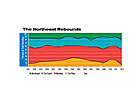
Machinery Manufacturing
As a group, machinery manufacturers (NAIC 333) will account for just 10 percent of total spending next year. That’s down from 19 percent in 2011, and it ties a low-water mark set in 2010. In terms of dollars, assemblers of lawn tractors, printing presses, photocopiers, pizza ovens, elevators and turbines will spend $239.6 million on assembly technology in 2012. That’s 56 percent less than what they spent this year, but it’s still higher than the total for 2010.Twenty percent of plants will spend at least $1 million next year, which is not that far from the 23 percent that spent that much in 2011. Indeed, 37 percent of all plants with million-dollar budgets are in NAIC 333.
What will change next year is spending in the middle range. Just 4 percent of plants in NAIC 333 will spend between $250,000 and $1 million in 2012. In contrast, 10 percent of plants in this industry spent that much in 2011.
On average, assemblers in this industry will spend $837,250 on assembly technology next year. That’s better than any other industry except for transportation equipment, but it’s 32 percent less than the average for this industry in 2011.
Machinery makers continue to be hampered by old and worn-out equipment. Nearly half the plants in this industry cite that as a reason for buying assembly technology in 2012. That compares with 46 percent for all plants, and it marks the eighth straight year that NAIC 333 has exceeded the percentage for the nation as a whole.
Machinery makers aren’t all that excited about lean manufacturing. Just 15 percent of plants in this industry are buying equipment as part of lean initiatives. That’s the lowest percentage of any industry this year, and it’s the third consecutive year that NAIC 333 has been below the national percentage in that regard.
Compared with other industries, manufacturers in NAIC 333 are more likely to buy power tools (68 percent vs. 58 percent for all plants); welding, brazing and soldering equipment (46 percent vs. 39 percent for all plants), workstations (51 percent vs. 46 percent for all plants), and tooling (65 percent vs. 56 percent for all plants).
Manufacturers in NAIC 333 continue to take a long-term view on investment. In fact, 86 percent have an ROI period of more than 12 months for their 2012 investments. That contrasts with 77 percent for all U.S. plants, and it marks the eighth time in the past 10 years that machinery makers have exceeded the national percentage.
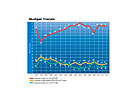
Computers and Electronics
Manufacturers in the computer and electronics industry (NAIC 334) may not spend more next year than they did this year, but at least they won’t spend any less. Sixty percent of plants in NAIC 334 expect to spend about the same in 2012 as they did in 2011. That compares with 43 percent for all U.S. plants, and it’s the biggest percentage of any industry.Assemblers of clocks, disk drives, telephones, radar equipment, thermostats, microchips and other electronic equipment will account for 21 percent of total spending next year. That puts this industry second behind only transportation equipment manufacturers, and it’s the industry’s largest share since 2008.
All totaled, equipment spending in NAIC 334 will decrease 8 percent, from $549.1 million in 2011 to $503.2 million in 2012. Thirteen percent of plants in this industry will spend more than $1 million on assembly technology next year, and 16 percent will spend between $250,000 and $1 million. Both percentages are up from 2011.
On average, plants in NAIC 334 will spend $555,690 in 2012, up from $365,835 in 2011 and $110,630 in 2010.
Compared with other industries, plants in NAIC 334 are more likely to buy equipment to assemble a new product (50 percent vs. 37 percent for all U.S. plants) or to replace old machinery (53 percent vs. 46 percent for all U.S. plants). But, they are less likely than other industries to get equipment to implement lean (22 percent vs. 28 percent for all U.S. plants) or increase safety (6 percent vs. 18 percent for all U.S. plants).
For the fourth time in the past 10 years, this industry leads all others in the amount of plants (30 percent) that trying to lower their material costs. Similarly, 45 percent of plants in NAIC 334 are looking to reduce the cost of scrap, compared with 37 percent for all industries.
Not surprisingly, manufacturers in NAIC 334 lead all other industries in purchasing electronics assembly equipment. Forty percent will do so next year, compared with 13 percent for the nation as a whole. In addition, manufacturers in NAIC 334 are more likely to buy dispensing equipment (27 percent vs. 21 percent for all plants), test equipment (70 percent vs. 46 percent for all plants), and inspection technology (60 percent vs. 47 percent for all plants).
Given the high-tech nature of electronic products, it’s no surprise that manufacturers in NAIC 334 don’t build their own assembly equipment. On average, plants in this industry meet 33 percent of their assembly system needs with equipment built in-house. That compares with 40 percent for the nation as a whole, and it’s the lowest percentage of any industry.
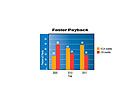
Fabricated Metal Products
In October, Olin Corp. opened a new assembly plant in Oxford, MS, to make Winchester ammunition. The plant is expected to bring 1,000 jobs to the region.Unfortunately, such investment might not be prevalent next year among manufacturers in the fabricated metal products industry (NAIC 332). Only 28 percent of plants in the industry will spend more next year than they did this year. That’s the lowest percentage since the great recession year of 2010.
Actual budget figures tell the story more clearly. Only 4 percent of plants in the industry will spend more than $1 million on assembly technology next year, and just 8 percent will spend between $250,000 and $1 million. In 2011, both percentages were double. The average budget will go from $415,276 in 2011 to $167,810 in 2012.
As a group, manufacturers of windows, cans, springs, bearings, guns and other products will spend $359.4 million on capital equipment in 2012, accounting for 15 percent of total spending.
One reason for the lack of spending might be that the industry just doesn’t have any new products to make. Only 27 percent of plants in this industry are investing in equipment to make a new product. That’s the lowest percentage of any industry, and it’s the fourth time in five years that NAIC 332 has held that distinction.
Compared with other industries, manufacturers in NAIC 332 are more likely to buy parts feeders (28 percent vs. 22 percent for all plants), power tools (68 percent vs. 58 percent for all plants), welding, brazing and soldering equipment (46 percent vs. 39 percent for all plants), and tooling (65 percent vs. 56 percent for all plants).

Electrical Equipment and Appliances
In October, Electrolux Home Products Inc. broke ground for a new assembly plant in Memphis, TN. Electrolux is spending $190 million to construct the 700,000-square-foot plant. When completed, the facility will employ 1,240 people and assemble 700,000 ovens annually.Electrolux will not be the only company in the electrical equipment industry (NAIC 335) that will be investing in new facilities and equipment next year. Indeed, 48 percent of plants in this industry will spend more on assembly technology in 2012 than they did in 2011. That’s the biggest percentage for the industry since we switched to the NAIC system in 2005. Only 16 percent of plants will spend less.
Thirteen percent of plants in the industry will spend more than $1 million on assembly technology next year, down from 25 percent in 2011. However, 22 percent of plants will spend between $250,000 and $1 million-twice the percentage from 2011.
On average, assemblers of lamps, refrigerators, mixers and other electrical products will spend $356,578 on capital equipment in 2012. All totaled, the industry will spend $455.2 million on assembly technology next year, 5 percent more than what it spent in 2011.
Almost half-47 percent-the plants in this industry are getting equipment to boost capacity. That’s the biggest percentage of any industry, and it marks the fourth time in eight years that the industry has held that distinction.
Quality control is a nagging concern in this industry. Eighteen percent of assemblers in NAIC 335 will buy equipment next year to meet more stringent quality standards. That contrasts with 12 percent for all U.S. plants, and it’s the seventh time in nine years that this industry has led all others in that regard.
And, for the second time in three years, NAIC 335 will lead the nation in assembly plants (53 percent) looking to replace old machinery.
Compared with other industries, manufacturers in NAIC 335 are more likely to buy dispensing equipment (33 percent vs. 21 percent for all plants), assembly presses (33 percent vs. 27
percent for all plants), electronics assembly equipment (24 percent vs. 13 percent for all plants), test equipment (58 percent vs. 46 percent for all plants), and wire processing machines (33 percent vs. 13 percent for all plants).
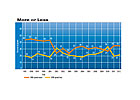
Medical Device Manufacturing
In August, Positron Corp., a manufacturer of medical imaging equipment, moved into a new assembly plant just outside of Indianapolis.Positron’s new facility is emblematic of the continuing growth in this industry-growth that should continue next year.
According to the NAIC system, Positron and other medical and dental device manufacturers are classified under Miscellaneous Manufacturing (NAIC 339). Although this category also includes assemblers of sporting goods, jewelry, toys, pens, mops, musical instruments and caskets, companies like Positron represent the lion’s share of capital investment by this industry.
Capital spending in NAIC 339 is expected to increase 18 percent next year, from $202.3 million in 2011 to $239.6 million in 2012. Remarkably, it’s the third straight year that spending has increased in this industry. In fact, manufacturers in NAIC 339 have increased capital spending in five of the past six years-an unprecedented achievement.
Although no respondents to this year’s survey claimed a 2012 capital budget over $1 million, one in four plants in this industry spend between $250,000 and $1 million. That compares with 15 percent in 2011 and 6 percent in 2010. On average, manufacturers in NAIC 339 will invest $148,812 on assembly technology in 2012, compared with $193,595 in 2011.
With the industry’s strong growth, labor costs appear to be rising. A whopping 93 percent of plants in this industry will be trying to lower direct labor costs next year. That leads all industries, and it’s the second time in three years that NAIC 339 has led the nation in that regard.
Work in process is another persistent concern in this industry. For the second straight year, and the third time in the past five years, NAIC 339 leads the nation in the percentage of plants (29 percent) that are looking to reduce the cost of WIP.
Compared with other industries, manufacturers in NAIC 339 are more likely to buy dispensing equipment (30 percent vs. 21 percent for all plants), parts feeders (30 percent vs. 22 percent for all plants), robots (20 percent vs. 12 percent for all plants), conveyors (20 percent vs. 12 percent for all plants), automatic identification systems (50 percent vs. 35 percent for all plants), and packaging equipment (50 percent vs. 32 percent for all plants).



